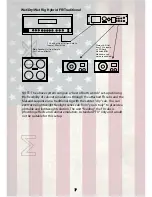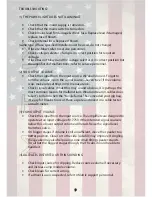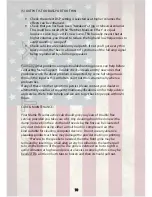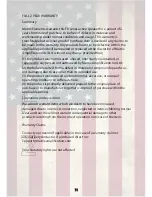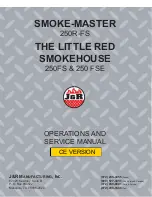
CAUTION:
OBSERVE ALL SAFETY AND
USAGE INSTRUCTIONS TO AVOID
POSSIBLE DAMAGE TO
EQUIPMENT AND EXPOSURE TO
HAZARDS. THIS SYMBOL
UNIVERSALLY FLAGS CAUTION
NOTICES
LETHAL VOLTAGES PRESENT AT
SPEAKER, CABLE AND AMPLIFIER
TERMINALS; ENSURE ALL
WIRING IS SAFE AND CORRECT
BEFORE USE. THIS SYMBOL
ALSO UNIVERSALLY FLAGS
ELECTRICAL HAZARDS
DO NOT OPEN UNIT; LEAVE ALL
INTERNAL SERVICE OPERATIONS
TO A QUALIFIED TECHNICIAN.
THIS PRODUCT IS CAPABLE OF
PRODUCING SOUND PRESSURE
LEVELS WHICH MAY DAMAGE
HEARING.
THE USER IS RESPONSIBLE FOR
EXPOSURE LEVELS AND USE OF
HEARING PROTECTION.
OPERATING ENVIRONMENT:
This amplified speaker is designed for use in environments
which protect it from rain, unusually high air humidity and
temperature.
Place on a surface where it cannot be easily dislodged,
potentially causing damage to the unit or injury to a person.
Ensure that the location will not expose the amplifier to
spillage of liquids/drinks, sprays/vapours or high humidity.
Ensure the amplifier is installed in a place which is not
subject to abnormally high temperatures and maintain
sufficient ventilation to prevent overheating.
For temporary use outside, apply similar caution however,
careful to ensure placement accounts for changing weather
conditions and that extreme wind/rain/heat will not find its
way to the equipment.
When taking any equipment from a cold environment
(unheated storage, vehicles, etc), into a warm one, allow the
equipment time to become acclimatised to the ambient
temperature, as condensation is likely to form in the
amplifier, potentially causing it to malfunction if put into
service too soon.
Note:
This equipment has been tested and found to comply
with the limits for a Class B digital device, pursuant to part
15 of the FCC Rules. These limits are designed to provide
reasonable protection against harmful interference in a
residential installation. This equipment generates, uses and
can radiate radio frequency energy and, if not installed and
used in accordance with the instructions, may cause harmful
interference to radio communications. However, there is no
guarantee that interference will not occur in a particular
installation. If this equipment does cause harmful
interference to radio or television reception, which can be
determined by turning the equipment off and on, the user is
encouraged to try to correct the interference by one or more
of the following measures:
— Reorient or relocate the receiving antenna.
— Increase the separation between the equipment and
receiver.
— Connect the equipment into an outlet on a circuit different
from that to which the receiver is connected.
— Consult the dealer or an experienced radio/TV technician
for help.
2








